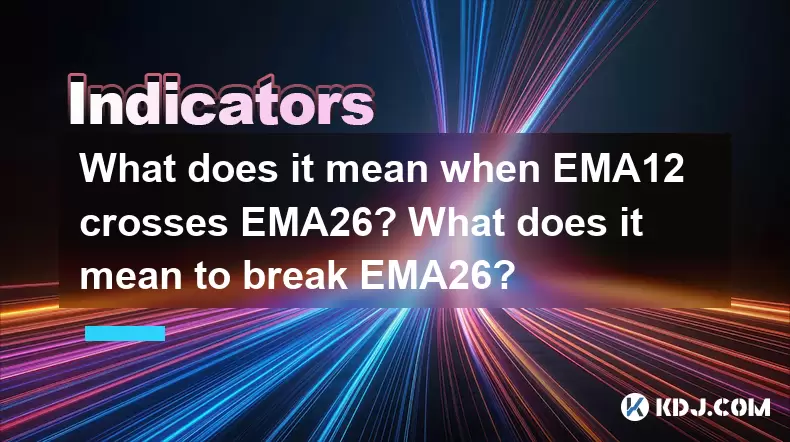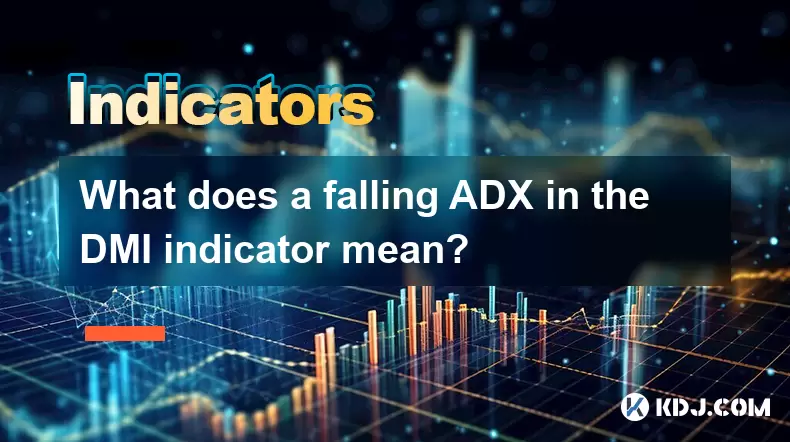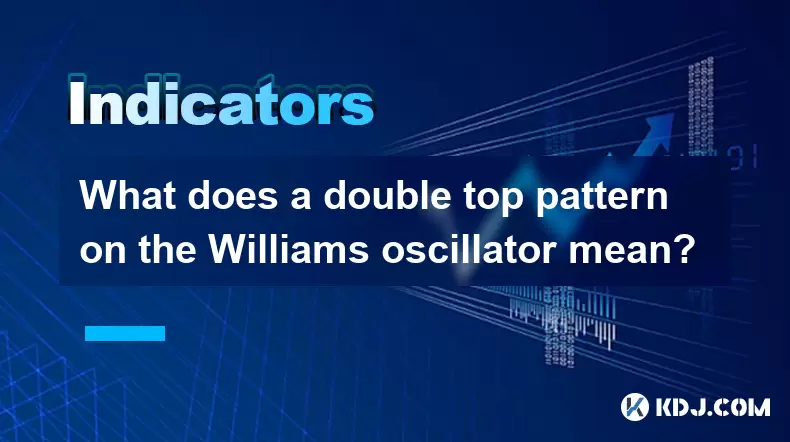-
 Bitcoin
Bitcoin $116700
0.24% -
 Ethereum
Ethereum $3973
4.34% -
 XRP
XRP $3.283
7.68% -
 Tether USDt
Tether USDt $1.000
0.01% -
 BNB
BNB $789.8
2.27% -
 Solana
Solana $176.2
3.31% -
 USDC
USDC $0.9999
0.00% -
 Dogecoin
Dogecoin $0.2238
5.14% -
 TRON
TRON $0.3389
-0.51% -
 Cardano
Cardano $0.7907
4.03% -
 Stellar
Stellar $0.4527
10.02% -
 Hyperliquid
Hyperliquid $41.07
4.27% -
 Sui
Sui $3.794
1.77% -
 Chainlink
Chainlink $19.49
10.40% -
 Bitcoin Cash
Bitcoin Cash $580.9
0.74% -
 Hedera
Hedera $0.2617
4.32% -
 Avalanche
Avalanche $23.41
3.67% -
 Ethena USDe
Ethena USDe $1.001
-0.03% -
 Litecoin
Litecoin $122.4
1.38% -
 Toncoin
Toncoin $3.364
1.49% -
 UNUS SED LEO
UNUS SED LEO $8.988
0.37% -
 Shiba Inu
Shiba Inu $0.00001295
2.82% -
 Uniswap
Uniswap $10.62
5.75% -
 Polkadot
Polkadot $3.922
4.46% -
 Dai
Dai $1.000
0.01% -
 Bitget Token
Bitget Token $4.494
2.15% -
 Monero
Monero $268.0
-1.30% -
 Cronos
Cronos $0.1523
3.68% -
 Pepe
Pepe $0.00001127
4.43% -
 Aave
Aave $285.4
4.85%
What does it mean when EMA12 crosses EMA26? What does it mean to break EMA26?
EMA12 crossing above EMA26 signals a bullish trend, while breaking below EMA26 suggests bearish momentum; traders use these for entry and exit decisions.
Jun 01, 2025 at 04:08 pm

When discussing technical analysis in the cryptocurrency market, two commonly used indicators are the Exponential Moving Averages (EMAs), specifically the EMA12 and EMA26. These tools help traders identify potential trends and make informed decisions. This article will explore what it means when the EMA12 crosses the EMA26 and what it signifies when a price breaks through the EMA26.
Understanding EMA12 and EMA26
Exponential Moving Averages (EMAs) are a type of moving average that places a greater weight and significance on the most recent data points. The EMA12 is calculated using the past 12 periods, while the EMA26 uses the past 26 periods. These periods can be days, hours, or any other time frame depending on the trader's preference.
The EMA12 is more sensitive to recent price changes because it uses fewer periods in its calculation. This makes it quicker to respond to price movements. The EMA26, on the other hand, is less sensitive and provides a smoother, longer-term trend line.
The Significance of EMA12 Crossing EMA26
When the EMA12 crosses the EMA26, it is a significant event known as the MACD (Moving Average Convergence Divergence) crossover. This crossover can signal potential trend changes in the market.
- Bullish Crossover: When the EMA12 crosses above the EMA26, it is considered a bullish signal. This indicates that the short-term trend is becoming stronger than the long-term trend, suggesting a potential upward movement in price.
- Bearish Crossover: Conversely, when the EMA12 crosses below the EMA26, it is considered a bearish signal. This indicates that the short-term trend is weakening compared to the long-term trend, suggesting a potential downward movement in price.
Traders often use these crossovers to make entry and exit decisions. For instance, a trader might buy a cryptocurrency when the EMA12 crosses above the EMA26, anticipating a bullish trend, and sell when the EMA12 crosses below the EMA26, anticipating a bearish trend.
Breaking EMA26: What It Signifies
When the price of a cryptocurrency breaks through the EMA26, it can be a significant indicator of a potential trend change. The EMA26 acts as a dynamic support or resistance level, depending on the direction of the trend.
- Breaking Above EMA26: If the price breaks above the EMA26, it suggests that the bullish momentum is strong enough to overcome the longer-term trend. This can be a signal for traders to consider entering long positions, expecting the price to continue rising.
- Breaking Below EMA26: If the price breaks below the EMA26, it suggests that the bearish momentum is strong enough to push the price below the longer-term trend. This can be a signal for traders to consider entering short positions or exiting long positions, expecting the price to continue falling.
Using EMA12 and EMA26 in Trading Strategies
Traders often combine the EMA12 and EMA26 with other technical indicators to create robust trading strategies. Here are some common strategies:
- MACD Strategy: As mentioned earlier, the MACD is derived from the difference between the EMA12 and EMA26. Traders use the MACD line and its signal line (a 9-period EMA of the MACD line) to generate buy and sell signals.
- Buy Signal: When the MACD line crosses above the signal line, it is considered a buy signal.
- Sell Signal: When the MACD line crosses below the signal line, it is considered a sell signal.
- Trend Confirmation: Traders might use the EMA12 and EMA26 to confirm trends identified by other indicators. For example, if a moving average convergence suggests a bullish trend, and the price breaks above the EMA26, it can strengthen the bullish case.
- Stop-Loss and Take-Profit Levels: Traders can use the EMA26 as a dynamic stop-loss or take-profit level. For instance, if a trader enters a long position after a bullish crossover, they might set a stop-loss just below the EMA26 to protect against a potential reversal.
Practical Example of EMA12 and EMA26 in Action
Let's walk through a practical example of how a trader might use the EMA12 and EMA26 in a trading scenario.
- Scenario: A trader is monitoring Bitcoin (BTC) on a 1-hour chart.
- Observation: The trader notices that the EMA12 has just crossed above the EMA26, indicating a potential bullish trend.
- Action: The trader decides to enter a long position on BTC, expecting the price to rise.
- Price Movement: The price of BTC starts to rise and eventually breaks above the EMA26, confirming the bullish trend.
- Further Action: The trader might decide to hold the position as long as the price remains above the EMA26, using it as a dynamic support level. If the price breaks below the EMA26, the trader might exit the position to lock in profits or limit losses.
Common Mistakes to Avoid
While the EMA12 and EMA26 can be powerful tools, traders should be aware of common pitfalls:
- False Signals: Not every crossover or break of the EMA26 will result in a sustained trend. Traders should use additional confirmation indicators to avoid acting on false signals.
- Over-Reliance: Relying solely on the EMA12 and EMA26 without considering other market factors can lead to poor trading decisions. It's essential to use these indicators as part of a broader analysis.
- Ignoring Market Context: The effectiveness of the EMA12 and EMA26 can vary depending on market conditions. For instance, during high volatility, these indicators might generate more false signals.
Frequently Asked Questions
Q: Can the EMA12 and EMA26 be used on different time frames?
- A: Yes, the EMA12 and EMA26 can be applied to various time frames, such as minutes, hours, days, or even weeks. The choice of time frame depends on the trader's strategy and trading style. Shorter time frames are typically used for day trading, while longer time frames are used for swing trading or long-term investing.
Q: How can I adjust the sensitivity of the EMA12 and EMA26?
- A: The sensitivity of the EMA12 and EMA26 can be adjusted by changing the number of periods used in their calculation. A shorter period (e.g., EMA9 instead of EMA12) will make the indicator more sensitive to recent price changes, while a longer period (e.g., EMA30 instead of EMA26) will make it less sensitive. Traders should experiment with different periods to find what works best for their strategy.
Q: Are the EMA12 and EMA26 suitable for all cryptocurrencies?
- A: While the EMA12 and EMA26 can be applied to any cryptocurrency, their effectiveness may vary depending on the liquidity and volatility of the specific asset. More liquid and less volatile cryptocurrencies tend to produce more reliable signals, whereas less liquid and highly volatile cryptocurrencies may generate more false signals.
Q: How do I set up the EMA12 and EMA26 on a trading platform?
- A: Setting up the EMA12 and EMA26 on most trading platforms is straightforward. Here's how you can do it on a typical platform:
- Open the chart of the cryptocurrency you want to analyze.
- Look for the "Indicators" or "Studies" section in the platform's menu.
- Search for "Exponential Moving Average" or "EMA."
- Add two EMAs to the chart: one with a period of 12 and another with a period of 26.
- Adjust the colors and styles of the EMAs to your preference for better visibility.
Disclaimer:info@kdj.com
The information provided is not trading advice. kdj.com does not assume any responsibility for any investments made based on the information provided in this article. Cryptocurrencies are highly volatile and it is highly recommended that you invest with caution after thorough research!
If you believe that the content used on this website infringes your copyright, please contact us immediately (info@kdj.com) and we will delete it promptly.
- Roman Storm, Funding Effort, and the Looming Defense Retrial: A New York Minute on the Tornado Cash Case
- 2025-08-09 02:50:14
- Crypto's Wild Ride: XRP, Dogecoin, and the Altcoin Surge You Can't Ignore
- 2025-08-09 02:50:14
- Elon Musk, Bitcoin, and the Enduring Power of Approval: A Crypto Love Story?
- 2025-08-09 03:50:15
- Ruvi AI: The Next Big Thing After Ripple on CoinMarketCap?
- 2025-08-09 03:50:15
- Floki Price Surges: Elliott Wave and Fibonacci Setups Point to Potential Gains!
- 2025-08-09 02:30:16
- Pepe Price, RTX (Remittix?) & the $10K ETH Dream: NYC Crypto Chatter
- 2025-08-09 02:30:16
Related knowledge

What does it mean when the TRIX indicator suddenly diverges downward after a long period of convergence?
Aug 09,2025 at 12:56am
Understanding the TRIX Indicator in Cryptocurrency TradingThe TRIX indicator, or Triple Exponential Average, is a momentum oscillator used in technica...

Why is the rise limited after a MACD bottoming divergence?
Aug 09,2025 at 12:07am
Understanding MACD Bottoming Divergence in Cryptocurrency TradingThe MACD (Moving Average Convergence Divergence) is a widely used technical indicator...

What does it mean when the OBV continues to rise but the price is trading sideways?
Aug 08,2025 at 10:35pm
Understanding On-Balance Volume (OBV)On-Balance Volume (OBV) is a technical indicator that uses volume flow to predict changes in stock or cryptocurre...

What does a falling ADX in the DMI indicator mean?
Aug 09,2025 at 03:16am
Understanding the ADX and DMI Indicator FrameworkThe DMI (Directional Movement Index) is a technical analysis tool developed by J. Welles Wilder to id...

What does a double top pattern on the Williams oscillator mean?
Aug 09,2025 at 02:36am
Understanding the Williams %R OscillatorThe Williams %R oscillator is a momentum indicator developed by Larry Williams to identify overbought and over...

What is a nonce and how is it used in Proof of Work?
Aug 04,2025 at 11:50pm
Understanding the Concept of a Nonce in CryptographyA nonce is a number used only once in cryptographic communication. The term 'nonce' is derived fro...

What does it mean when the TRIX indicator suddenly diverges downward after a long period of convergence?
Aug 09,2025 at 12:56am
Understanding the TRIX Indicator in Cryptocurrency TradingThe TRIX indicator, or Triple Exponential Average, is a momentum oscillator used in technica...

Why is the rise limited after a MACD bottoming divergence?
Aug 09,2025 at 12:07am
Understanding MACD Bottoming Divergence in Cryptocurrency TradingThe MACD (Moving Average Convergence Divergence) is a widely used technical indicator...

What does it mean when the OBV continues to rise but the price is trading sideways?
Aug 08,2025 at 10:35pm
Understanding On-Balance Volume (OBV)On-Balance Volume (OBV) is a technical indicator that uses volume flow to predict changes in stock or cryptocurre...

What does a falling ADX in the DMI indicator mean?
Aug 09,2025 at 03:16am
Understanding the ADX and DMI Indicator FrameworkThe DMI (Directional Movement Index) is a technical analysis tool developed by J. Welles Wilder to id...

What does a double top pattern on the Williams oscillator mean?
Aug 09,2025 at 02:36am
Understanding the Williams %R OscillatorThe Williams %R oscillator is a momentum indicator developed by Larry Williams to identify overbought and over...

What is a nonce and how is it used in Proof of Work?
Aug 04,2025 at 11:50pm
Understanding the Concept of a Nonce in CryptographyA nonce is a number used only once in cryptographic communication. The term 'nonce' is derived fro...
See all articles

























































































